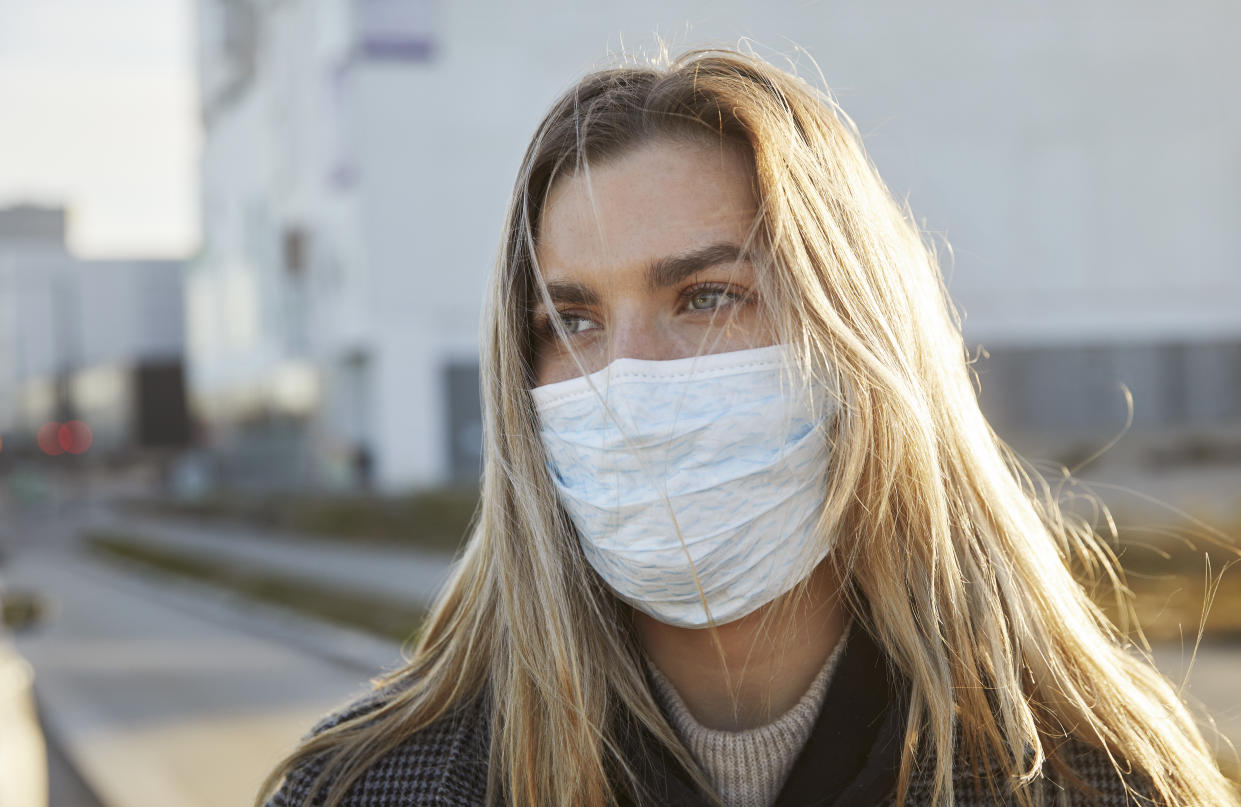Coronavirus found in woman’s eyes after doctors thought she had cleared the infection

Research suggests the coronavirus can enter a patient’s eyes, even lingering after they test negative for the infection.
In February, ophthalmologist Dr Li Wenliang caught the coronavirus while operating on a patient in Wuhan, the former epicentre of the outbreak. Among the first to warn about the dangers of the infection, Dr Wenliang later died of its complications.
Experts continued to question whether the coronavirus affects eyesight when Dominic Cummings argued he went on a half-an-hour journey to test his vision, in defence of breaking lockdown.
Boris Johnson’s chief adviser faced a backlash after it emerged he drove 260 miles from his home in London to his parent’s farm in Durham in March, while his wife had coronavirus symptoms.
Read more: What is long COVID?
Cummings claimed he was considering returning to London, but his wife suggested they first go on a shorter drive to the beauty spot Barnard Castle to test his vision, which he says was affected by a suspected coronavirus infection.
Experts were unconvinced at the time, however, a team from a hospital in Wuhan has since reported a woman endured an “acute glaucoma attack” – a sudden marked increase in eye pressure – while recovering from the coronavirus.
The doctors then discovered a coronavirus protein lingered at several sites in the woman’s eyes, two months after she tested positive.

Although the coronavirus mainly spreads via coughs and sneezes, it is no longer considered an exclusively respiratory infection.
Patients have reported a range of symptoms from diarrhoea and nausea, to hearing loss and rashes.
The coronavirus has previously been detected in some people’s eyes, however, this seemed to be relatively uncommon.
Read more: Long COVID patient 'not the same person she was'
To learn more, medics from the General Hospital of the Central Theater Command analysed an unnamed 64-year-old woman who was admitted on 31 December after enduring a cough and diarrhoea for nine days.
After testing positive for the coronavirus, she was treated via antiviral drugs and supplemental oxygen, despite not having severe symptoms.
Swabs came back negative for the coronavirus on 18 and 20 February.
On 28 February, however, the woman developed persistent pain and reduced vision in her left eye. Three days later, the same symptoms occurred in her right eye.
After going to an ophthalmology clinic on 8 March, tests revealed the fluid pressure inside her eyes was dangerously high at 50 mmHg – anything above 22 mmHg is considered abnormal.
Medics also discovered she had swollen corneas (the clear outer layer at the front of the eyes), overly dilated pupils (the black centre of the eyes that let light in), and clouding of the lenses (which focus light).
Read more: 26 animals 'in contact with people may be susceptible to coronavirus'
The woman was diagnosed with acute angle-closure glaucoma – when fluid cannot circulate through the eyes, raising pressure. She also had cataracts – cloudy patches in the lenses that blur vision.
She had surgery after the pressure in her eyes could not be lowered via medication.
While under the knife, tissue samples were collected for testing.
Watch: UK coronavirus cases high but deaths low - why?
Results revealed the nucleocapsid protein antigen, considered “the most abundant protein in coronavirus”, in the woman’s conjunctivae – the tissue that lines the inside of the eyelids; trabecular meshwork – the tissue around the base of the corneas; and irises – the coloured part of the eyes surrounding the pupils.
This protein was not found within the eye tissue of a control patient, who had never tested positive for the coronavirus.
Both individuals, however, expressed the angiotensin-converting enzyme 2 receptor (ACE2) on their conjunctivae. The coronavirus enters cells by binding to ACE2.
The Wuhan doctors also wondered if the infection “may spread systemically to end organs as a result of the primary respiratory infection”.
This is less likely than ACE2 binding, however, due to the woman testing negative for the virus at the time of her eye symptoms, they added.
It has also been suggested the infection may linger in “small pockets” of the body, potentially triggering long COVID – when complications continue after a patient tests negative.
Read more: How to swab a baby, toddler or child for coronavirus at home
The doctors stressed further research is required.
“These investigations should aim to determine whether the viral NP antigens that remain in the eye over time cause damage to the ocular structure or function, represent the presence of active viral residues in organs (not only the eyes), and are still infectious,” they wrote in the journal JAMA Ophthalmology.
This follows a small study that suggested one in five children with the coronavirus develop eye symptoms.
After looking at 216 children admitted to Wuhan Children’s Hospital in China with the infection, medics found 22.7% experienced conjunctivitis (pink eye) or “eye rubbing”.
The NHS states the main signs of infection are a fever, cough, or loss of taste or smell.
This list has been accused of being too limited, with the World Health Organization (WHO) stating everything from diarrhoea to discolouration of the toes could indicate infection. It also lists conjunctivitis as a “less common” coronavirus symptom.
The US Centers for Disease Control and Prevention lists 11 potential signs of infection, ranging from shortness of breath to headaches, but nothing eye-related.
Watch: How is coronavirus treated?



